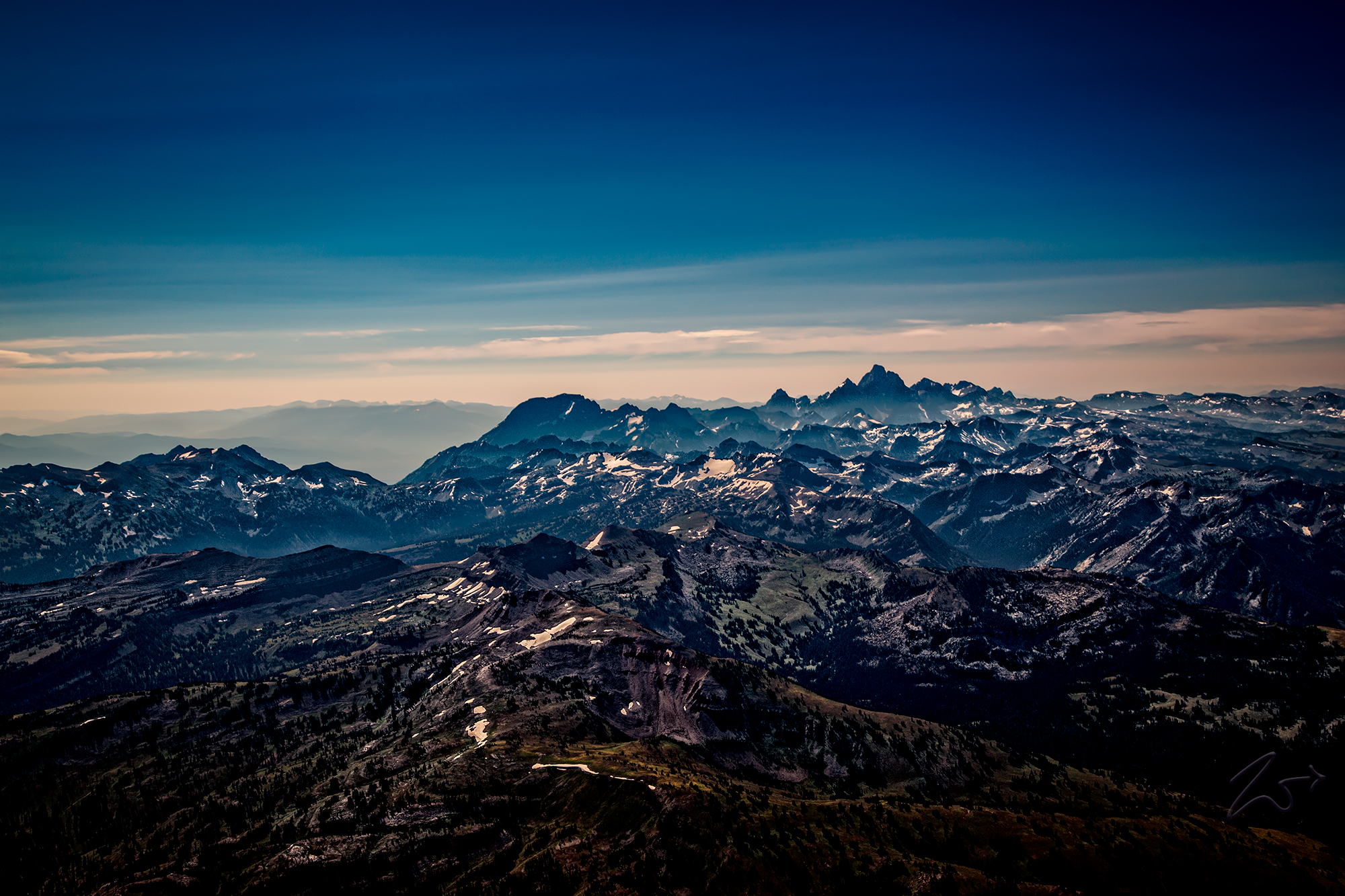 The Grand Tetons are one of the most iconic Mountain Ranges in North America, but most folks only know the view from the eastern side of the range down aside Jackson Hole and Jackson Lake.
The Grand Tetons are one of the most iconic Mountain Ranges in North America, but most folks only know the view from the eastern side of the range down aside Jackson Hole and Jackson Lake.
This image is a very unique view of the range from above Youngs Point in the Targhee National Forest. From this lofty position, a different perspective shows the many undulating ridges and peaks that make up the jagged mountains that populate the range.
Humans have occupied the area around these mountains for at least 11,000 years. They were drawn to the area by the incredible beauty of the mountains and a large abundance of plants and wildlife that were harvested for multiple First Nations tribes over millennia.
The archeological findings show that nomadic Paleo-Indians began frequenting Jackson Hole Valley after the last Ice Age glaciers began retreating at the end of the Pleistocene era. These findings are based on the many fire pits, stone tools and tipi rings found in numerous sites.
These were seasonal hunting and gathering grounds where descendants of those First Nations peoples still harvest bulbs and berries, fish the mountainous lakes and streams and hunt many types of wildlife.
